
 There could be no more surreal a juxtaposition than Obama vacationing in Honolulu while people in Iran, seeking freedom, are beaten, fight and die in the streets.
There could be no more surreal a juxtaposition than Obama vacationing in Honolulu while people in Iran, seeking freedom, are beaten, fight and die in the streets.
Today is a critical day for the nascent Iranian revolution, as it will no doubt be the largest demonstration since June. The success of the revolution - and the end of this most evil of regimes - increasingly hangs in the balance. Obama should be giving "full throated" support to the Iranian protesters and excoriating the regime for their brutality and illegitimacy. Instead, at this critical juncture, he reclines silently in Honolulu.
Indeed, not only has Obama remained silent, he did not even take the opportunity to express condolonces upon the death last Sunday of the spiritual leader of Iran's nascent revolution, Grand Ayatollah Montazeri. Obama's silence, his refusal to decisively stand with the protesters, and his continued treatment of the bloody regime of Khameini and Ahmedinejad as a legiitimate government constitute a failure of leadership and strategic thinking on a grand scale.
Demonstrations this week in Iran have been large and ongoing since the burial of Grand Ayatollah Montazeri on Monday. Those protests will culminate with today's celebration of Ashura, the day on which Muhammed's grandson, Husayn ibn Ali, was "martyred" during the Battle of Karbala in 680 A.D. It is one of the most important holy days in Shia Islam.
You can see the demonstrations that occurred with Grand Ayatollah Montazeri's burial here. Below is a clip of one of the demonstrations occurring yesterday outside of Tehran University and another from an unknown site in Tehran last night.
This from the NYT on yesterday's demonstratons:
Police officers and militia forces clashed with demonstrators in central Tehran all day Saturday and then again in northern Tehran in the evening, where the government forces shut down a speech by former President Mohammad Khatami, a reformist leader.
The demonstrators, who defied an official ban and turned a Shiite ceremony into a protest, underlined the government’s inability to suppress the opposition despite the use of violence. Protests have continued since a disputed presidential election in June, . . .
Witnesses and an opposition Web site said the police and Basij militiamen beat and arrested protesters in central Tehran.
The police fired tear gas at protesters in three central squares — Imam Hussein, Enghelab and Ferdowsi — the opposition Web site Jaras reported.
The militia forces attacked protesters with batons and chains, the Web site said.
Government forces also attacked cars whose drivers had honked in support of the protesters, and smashed their windows. Many vehicles’ license plates were taken away.
“They beat up people relentlessly although many were in mourning groups for Imam Hussein,” said a witness, who spoke via Skype on the condition of anonymity. “I saw many people with bloody noses or limping away. It was clear that they particularly targeted women and savagely beat them.”
The clashes came during the Iranian observance of Tasooa, an important Shiite holiday that falls just a day before the culmination of the Ashura mourning observances marking the death of Imam Hussein, a grandson of the Prophet Muhammad. . . .
This from WaPo on the larger demonstrations expected today:
Iran's opposition is gearing up for a potentially large demonstration against the government on Sunday to coincide with the climax of a major Shiite religious commemoration.
The Rah-e Sabz Web site, a mouthpiece of the grass-roots opposition movement, called for nationwide protests around noon in the capital, which on Saturday was the scene of several clashes between anti-government protesters and riot police.
"Today was only a test to show our readiness," read a statement on the Web site, which also denounced the government's use of violence during the present period of mourning for a Shiite saint. "Tomorrow we will come out following the invitations of the social network Green Path Of Hope movement." . . .
Everybody concerned with Iran should be paying attention to what happens today - not the least of whom is Obama. The government has tried once again to shut down all communications, but Twitter seems to still be working. There is a lot of traffic on #iranelection. More on what to expect comes from an exceptional article in the Guardian:
. . . The reported disturbances came amid evidence that Iran's supreme leader, Ayatollah Ali Khamenei, has ordered a crackdown on any challenges to his leadership during yesterday's Tasua ceremonies and Ashura, which is today.
The Observer has learned that the authorities have cancelled all leave for police and emergency services over the two days in anticipation of violence, while hospitals have been put on full alert to expect multiple casualties. The order is effective until midnight tonight.
"Cancelling leave means we are in for a very violent time," a paramedic said. "The authorities are very scared. They are prepared for everything and anything."
The move came after the opposition Green Movement had vowed to stage demonstrations during the ceremonies – held to mark the death more than 1,300 years ago of the Prophet Muhammad's grandson, Imam Hossein.
The continuing crackdown since President Mahmoud Ahmadinejad's bitterly disputed re-election six months ago has limited the opposition to holding protests on state-sanctioned occasions that the government is unable to ban.
This year's Ashura has been given added piquancy because it coincides with ritual seventh-day mourning ceremonies for Grand Ayatollah Hossein Ali Montazeri, the Green Movement's spiritual leader and one of Khamenei's fiercest critics, who died last Sunday aged 87.
Government fears have been further raised by the opposition's depiction of Montazeri as the modern incarnation of Hossein, who is revered in Shia Islam as a symbol of resistance against oppressive rulers. Montazeri spent the last 20 years ostracised by the theocratic hierarchy but re-emerged as a significant opposition figure after denouncing Ahmadinejad's victory as fraudulent and the subsequent suppression as "un-Islamic". The potent symbolism of his death was displayed last Monday when hundreds of thousands of mourners turned his funeral into the biggest opposition rally in months, despite stringent security.
An attempted mourning event by Montazeri supporters last Wednesday was broken up by riot police and plain-clothed agents using batons, teargas and pepper spray.
The cancellation of leave for emergency workers raises the chilling possibility of more lethal methods being used today. Leave was also cancelled in the weeks after the election, when scores of protesters were killed and hundreds more were injured after security forces were ordered to use extreme force.
The orders included permission for some members of the hardline basiji volunteer militia to shoot protesters, according to the paramedic.
On 20 June – a day after Khamenei had warned of a brutal reaction if unrest continued – the Tehran ambulance service's internal radio system confirmed that at least 47 people had died, many from gunshot wounds.
Among that day's dead was Neda Agha Soltan, a female protester who became a symbol of the demonstrations when her dying moments were caught on film after she had been shot by a sniper.
The government put the death toll on 20 June at around a dozen and says about 30 people died overall during the post-election unrest. It has denied giving orders to open fire on demonstrators.
But the paramedic said: "Out of every 100 basijis, 10 of them would have permission to shoot. We knew this because we were based alongside them. As eyewitnesses, we could see two or three of them shooting. I saw a basiji on the roof of a five-storey building shooting at people. He was ducking down and then coming up occasionally to shoot.
"The shooting was so severe that we ambulance workers were warned by the Revolutionary Guards to be careful we weren't shot. They would come to us for medical help, bandages and so on, and as a sign of appreciation they would say: 'If you're going to such-and-such street, be careful because they are going to be shooting from the roofs.' The city was like a war zone."
Some analysts have warned that increasing violence and mounting casualty figures are inevitable as Khamenei seeks to quash a revolt that has swollen beyond anger over the election into a revolt against his leadership.
In a graphic indication of the personal nature of the protests, demonstrators have begun to compare him to the Umayyad Caliph, Yazid, who was responsible for Hossein's death in AD680 and is a symbol of cruelty and moral corruption in Shia Islam.
Protesters in Tehran were yesterday heard chanting: "Khamenei has become Yazid and Yazid is now rehabilitated." The slogan was a new variant on existing anti-Khamenei chants, which include: "This month is the month of blood, Seiyed Ali [Khamenei] will be overthrown."
"Yazid was affected by drunkenness caused by wine and Khamenei is today ignoring the role of people in religion because he is drunk on power," Ebrahim Mehtari, an opposition activist who fled to Turkey after being raped and tortured, told the Observer. "If he carries on trampling on people's rights, he will be classified in the same category as other blood-spilling tyrants."
Mehdi Khalaji, an Iranian analyst at the Washington Institute for Near East Policy, warned that Khamenei would resort to ever more brutal methods to preserve his leadership. "Mohammad Khatami [Iran's reformist former president] was asked during a visit to Washington last year why he hadn't done more to resist Khamenei," he said. "He replied that it was because Khamenei is determined to fight his enemies if they come to the streets and that he is ready to kill up to 200,000 people. There are many pieces of evidence that confirm Khatami's understanding that Khamenei is prepared to kill more people.
"But it is Khamenei who has radicalised the opposition movement. His statements and behaviour have become more and more provocative and this has hurt the emotions of the people."
Montazeri's death removed one of the last sources of vocal clerical opposition to Khamenei. Grand Ayatollah Yousef Sanei, another pro-reformist critic of the regime and a putative successor to Montazeri, is seen as less substantial.
"The Shia clerical establishment is under the thumb of Khamenei," said Khalaji, a former Qom seminary student. "Even those who don't like him don't dare criticise him because they want to preserve their economic interests. What they think isn't important."
Among the opposition – still nominally led by the defeated reformist presidential candidates Mir Hossein Mousavi and Mehdi Karroubi – the initial aim of reversing the election has been replaced by the more far-reaching goal of reforming the Islamic system to eliminate the supreme leader's role, which gives Khamenei the final say on all matters.
"The Green Movement is not after unseating or deposing anybody from power," said Mehtari. "It wants the elimination of those currents that stand against people's rights. This includes Mr Khamenei, who determines his own right.
"I don't know if the state is still prepared to cover its hands in blood or not. But the more blood that is spilled, the more people will come out. This movement involves people from all spectrums of society. Those who shout in the streets range from labourers to the rich. They don't share a social class but they share a trampled right."
It took a year for the Shah's regime to fall. It did so three weeks after Iran's military declared for the protesters. Since the stolen election in June the mad mullah's brutal repression of protests, the penultimate question has been what will the military do and when will they do it?
In the past, the military has refused orders to suppress protests. Thus the IRGC and the mad mullah's brown shirts, the basij, have been carrying out the brutal suppression. Khameini has not called on a single regular military unit to help suppress this nascent revolution, and the military has remained silent. That changed two weeks ago, when many important military figures warned Khameini that they would not sit idly by if the brutal repression continues or gets worse.
It is doubtful that demonstrations today will prove decisive, but they will surely ratchet up the intensity, moving Iran ever closer to a decisive act by the military and the fall of this most evil of regimes. Such an event is hardly assured, and the revolution can still fail, which makes it all the more imperative that Obama lend decisive support to the protesters, as discussed in the post here. His failure to do so is on par with the failure of Britain and France to stand down Hitler in 1936-37, when Worl War II could have been averted.
Lastly, here is a video of Iranians braving bullets and tear gas to stop a hanging. According to the write-up on the video:
Sirjan, Iran Dec 22, public hanging of two men in the southern Iranian city of Sirjan in Kerman province, the semi-official news agency Fars reported on Tuesday. The crowd braved tear gas and bullets fired in the air by security forces and dragged the men down from the gallows. One seemed to be still alive when his body was removed, Fars said. The men were identified as Esmaeil Fathi More..zadeh and Mohammad Esfandiarpour and had both been convicted of armed robbery. The crowd, which included many relatives of the two men, chanted slogans against the Iranian authorities and threw stones at the security forces.
Welcome Larwyn's Linx readers





























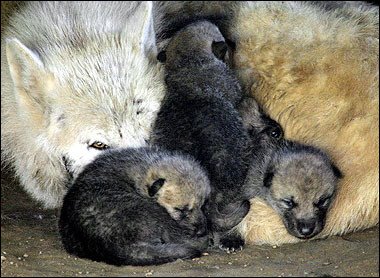

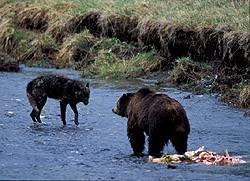






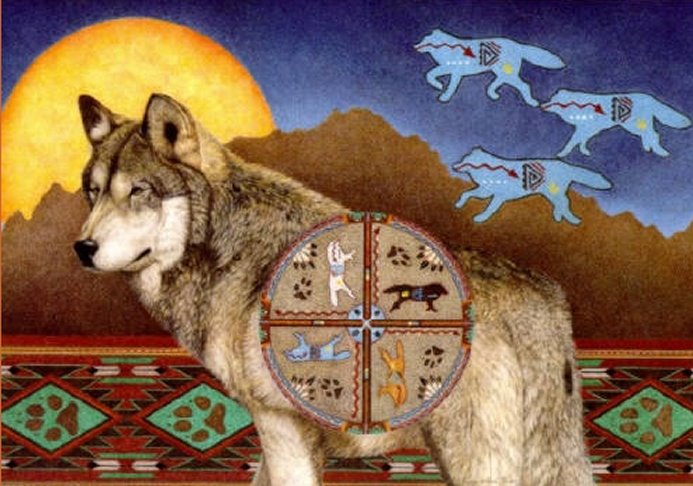



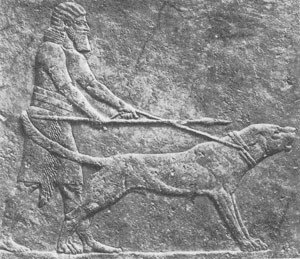
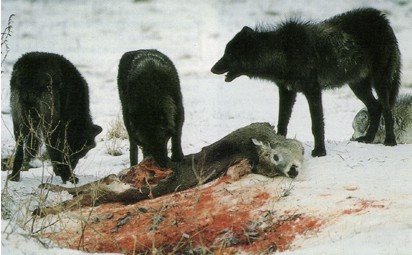



No comments:
Post a Comment